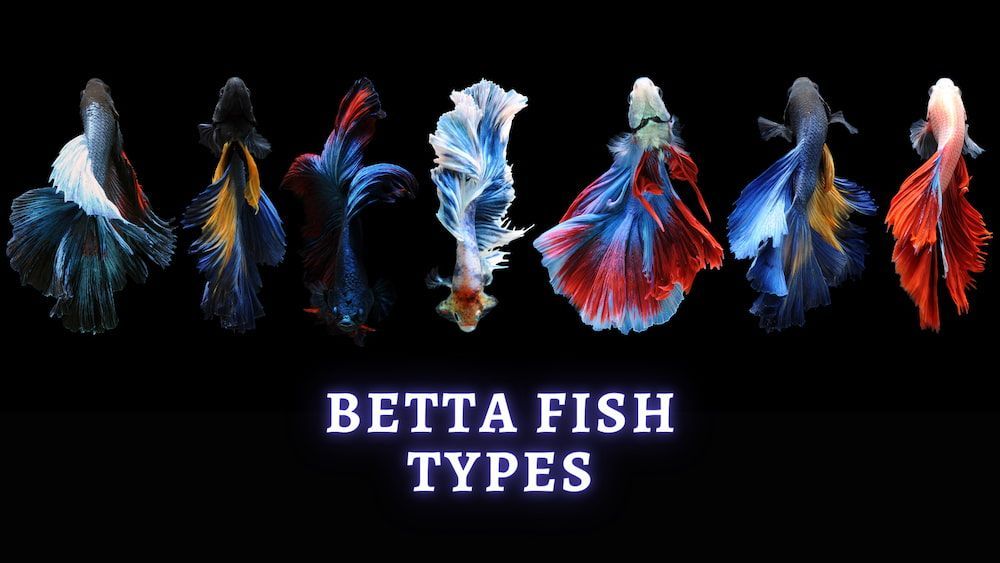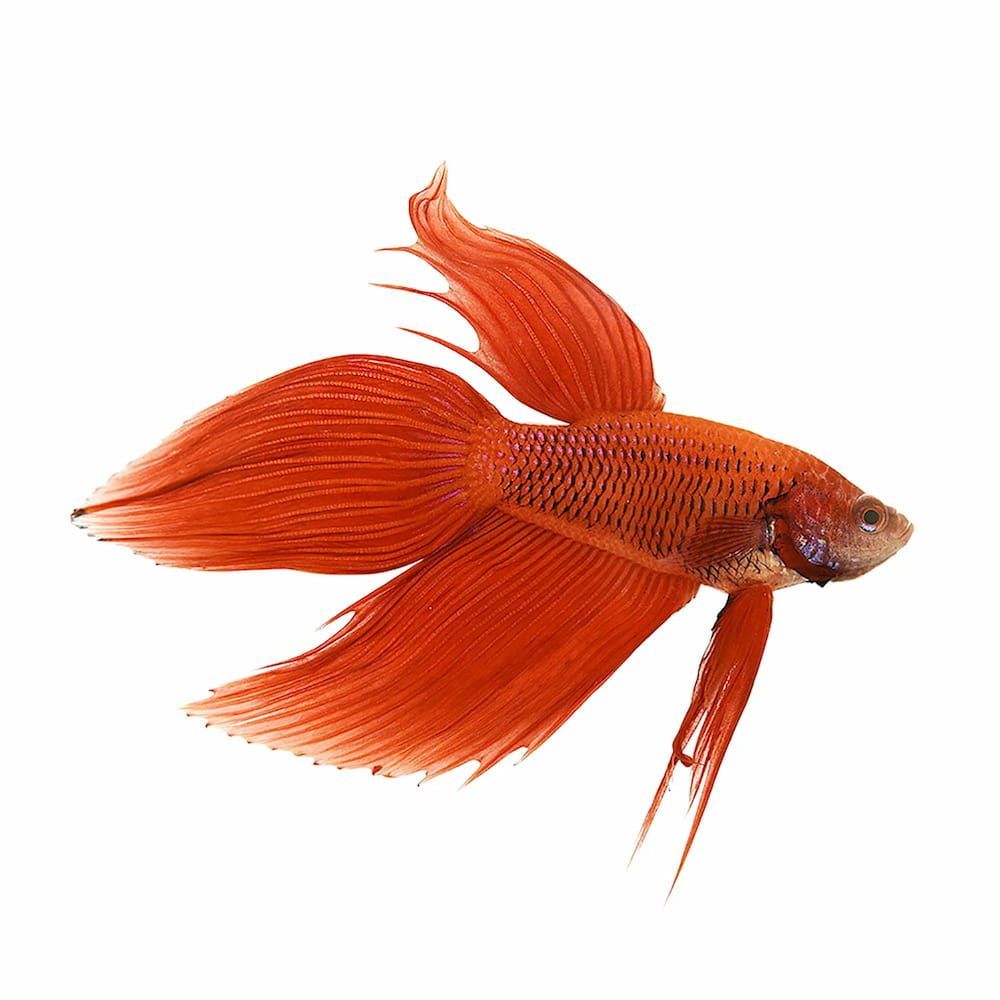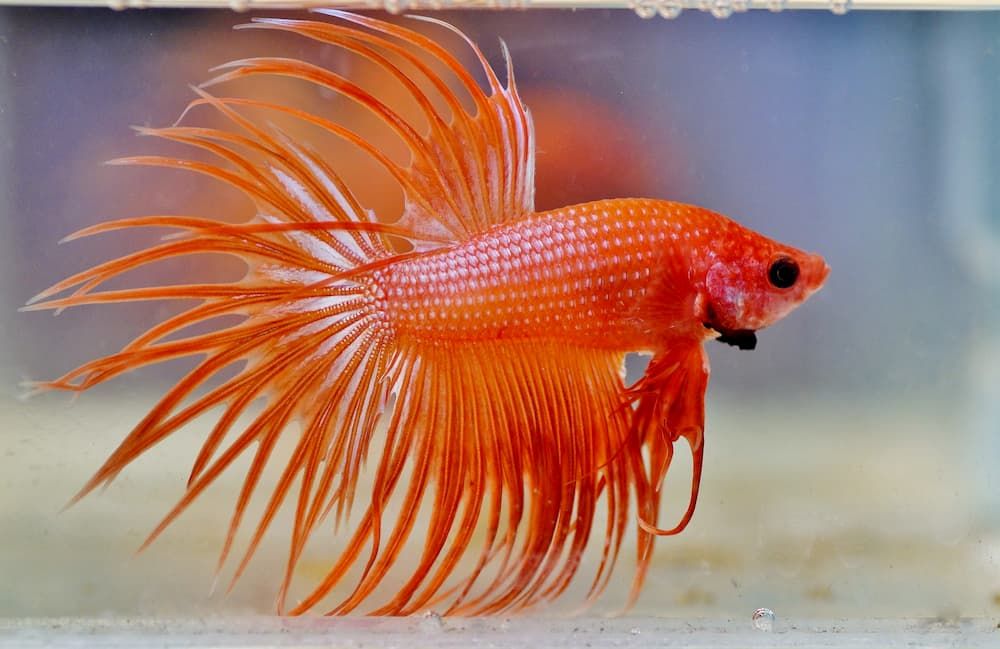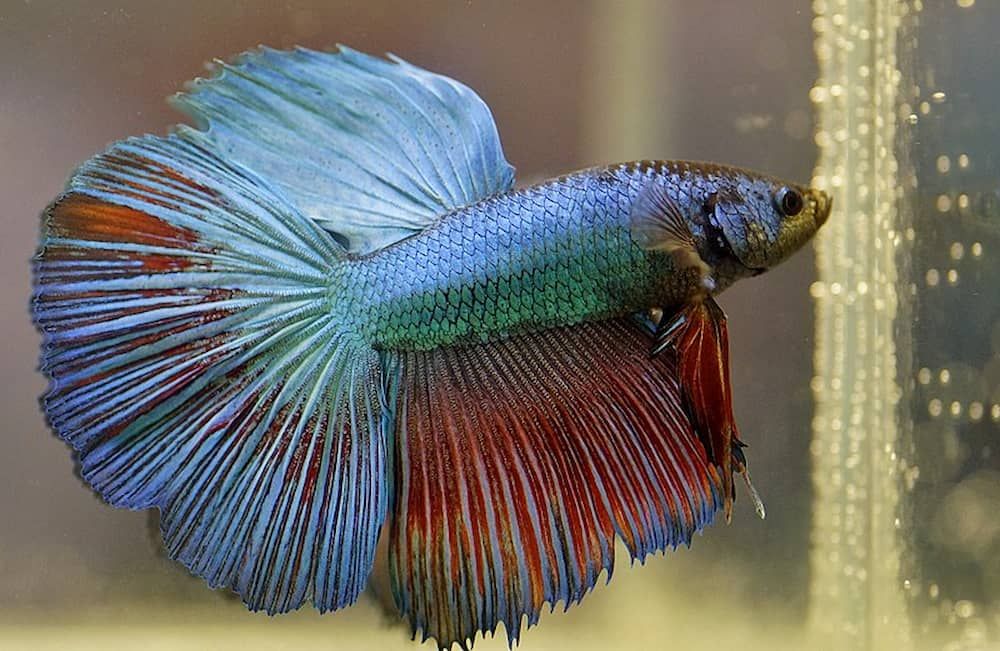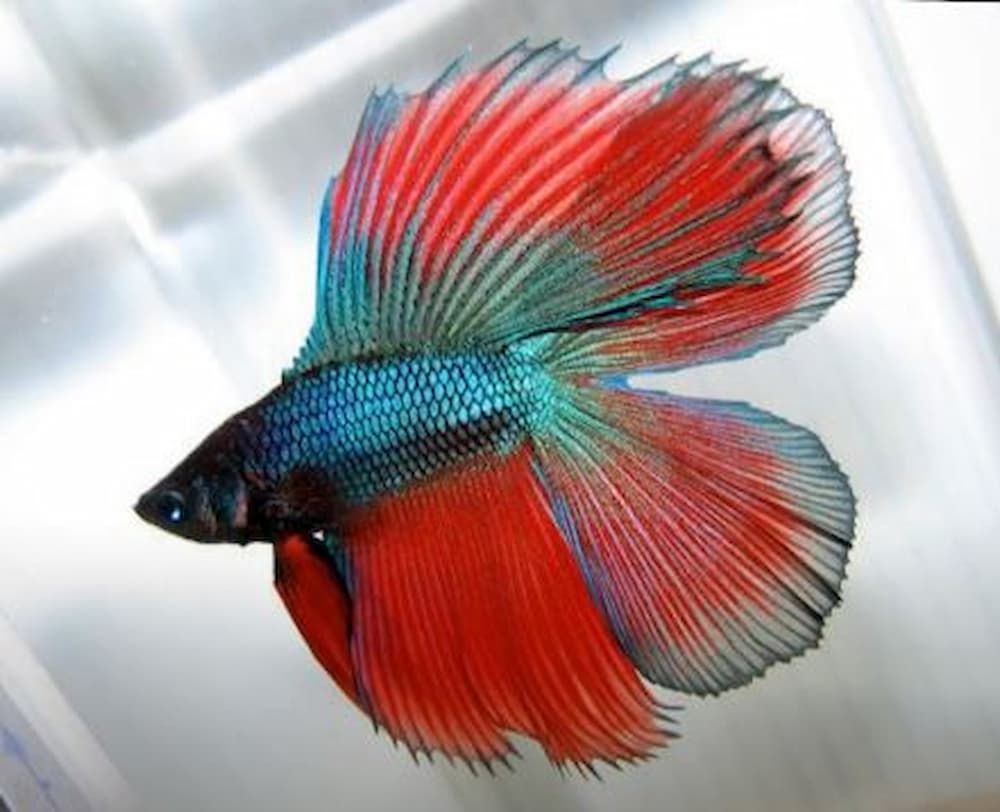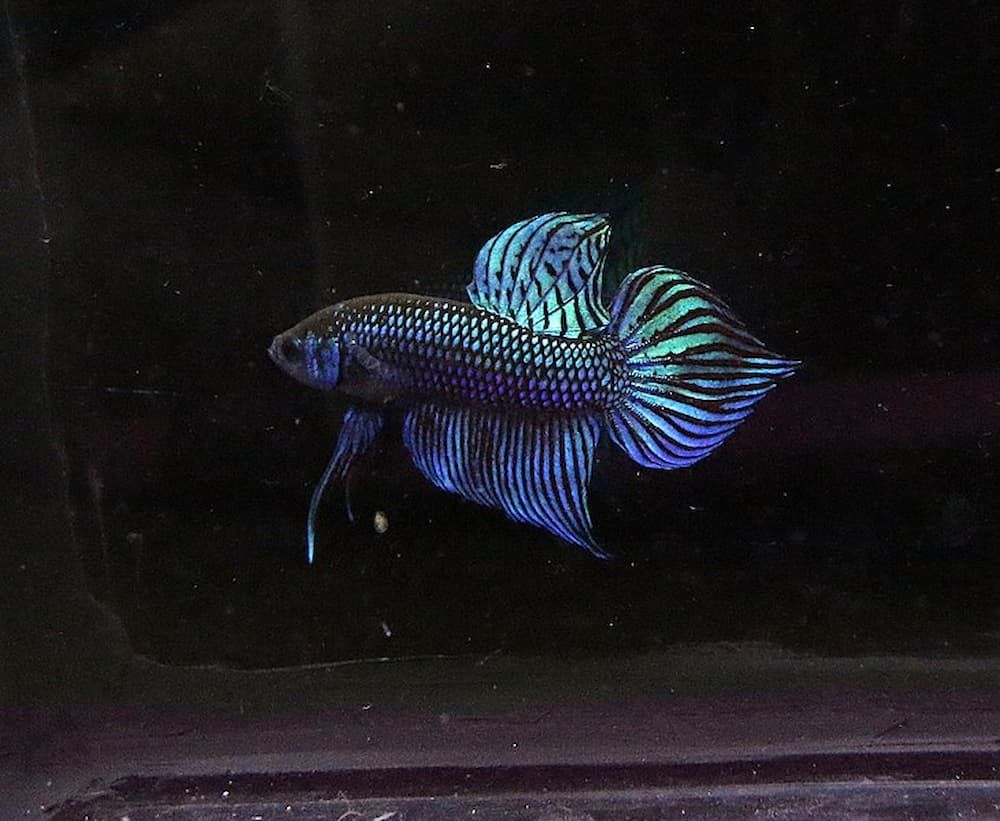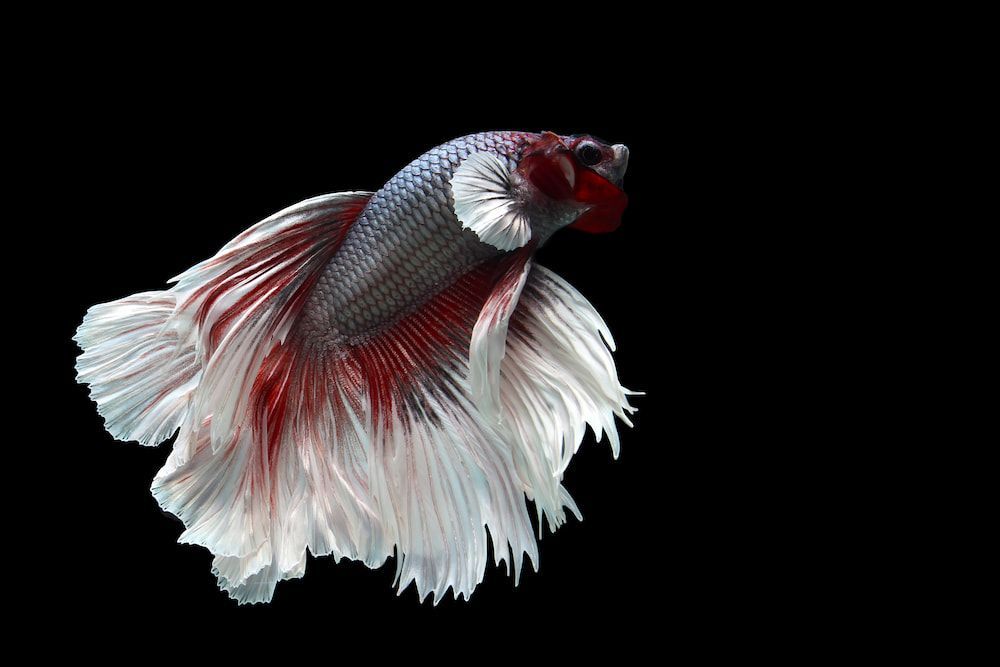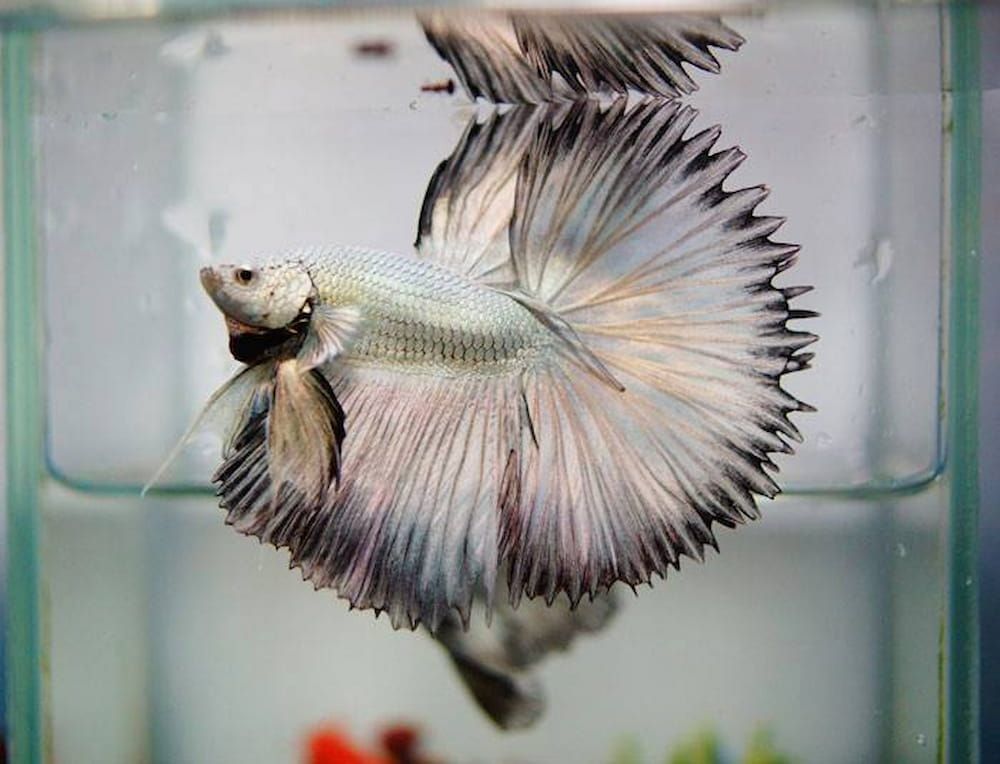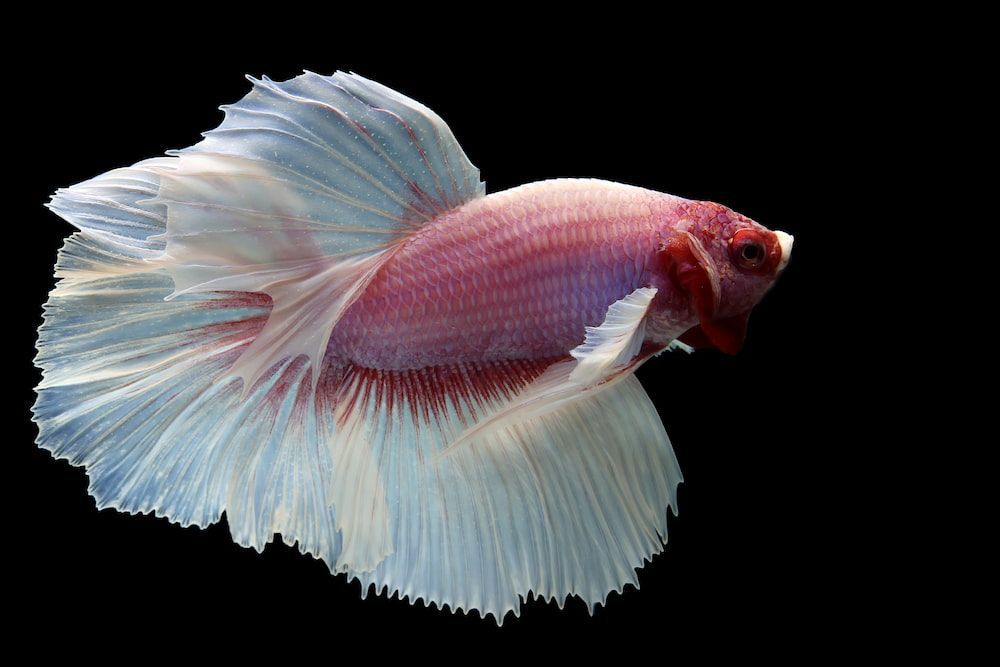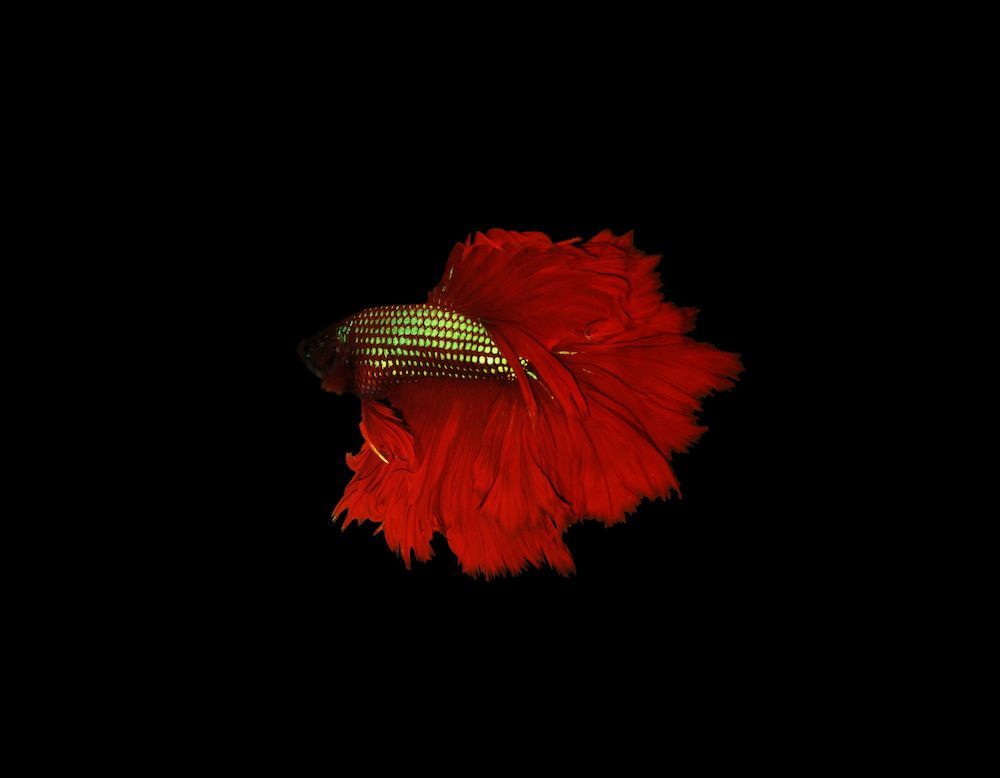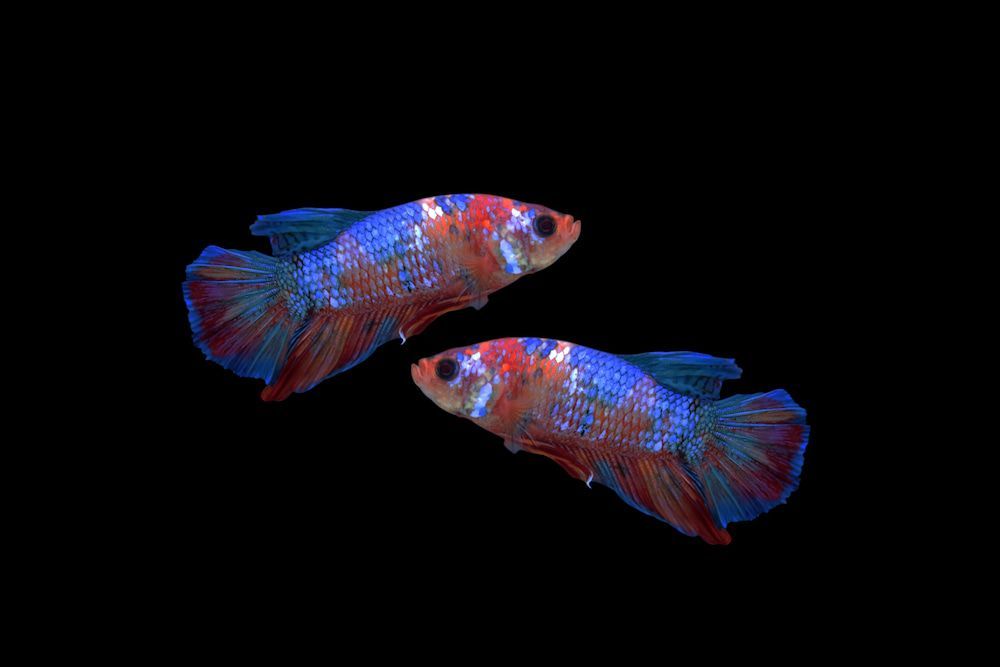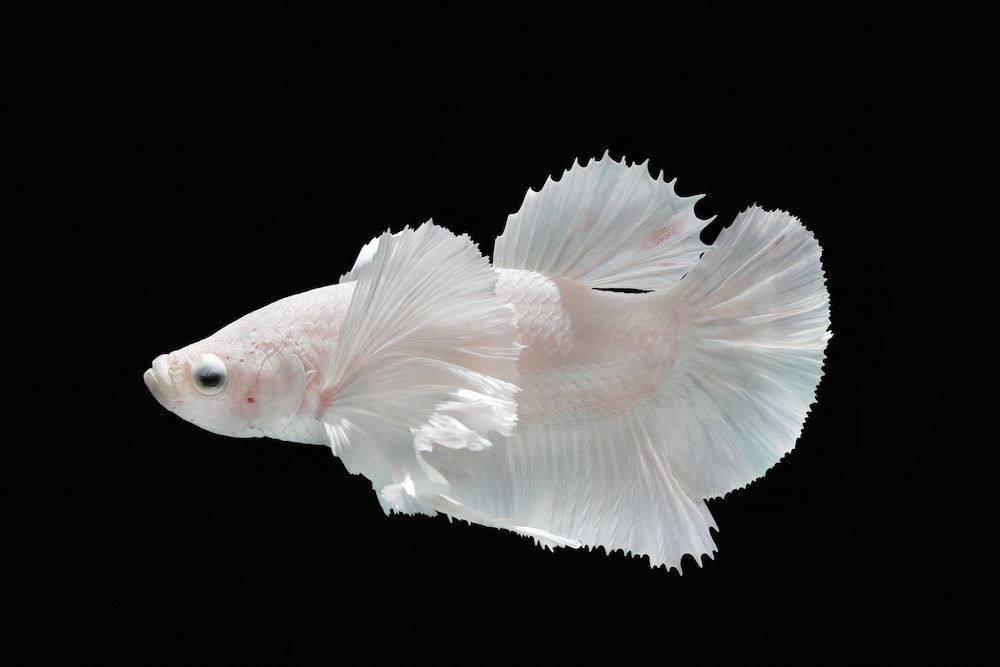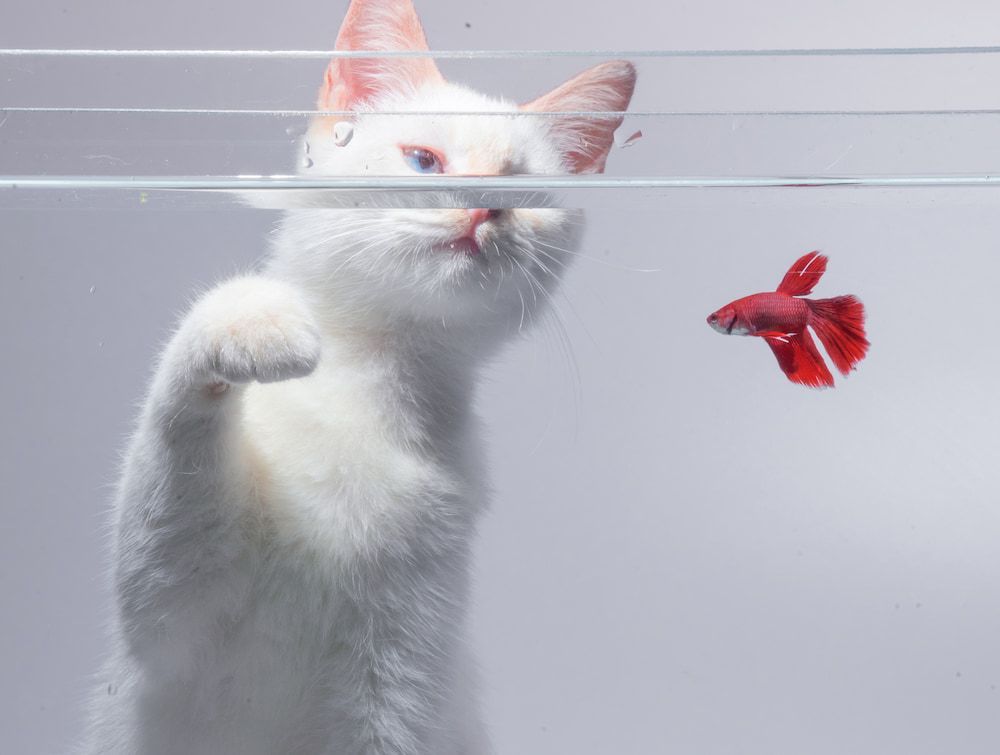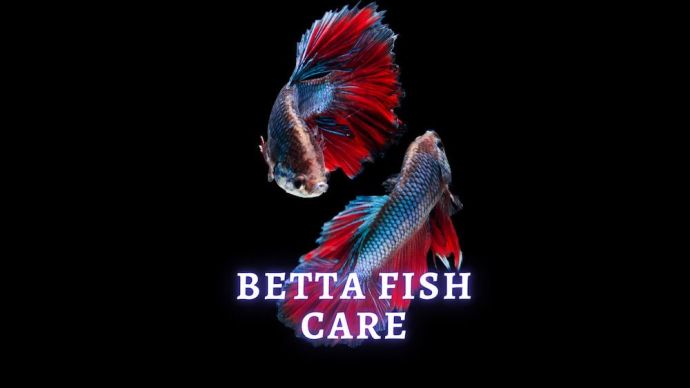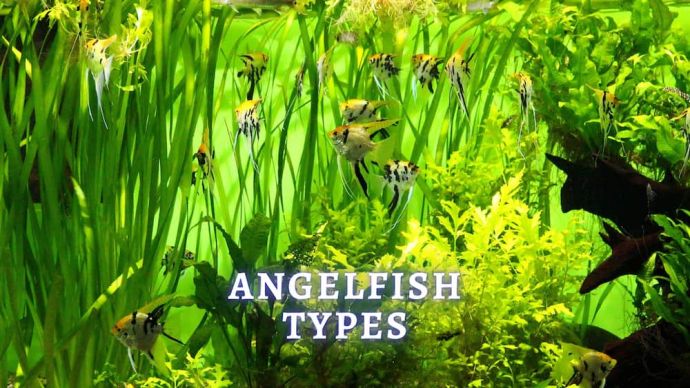Betta Fish Types: Colors, Tails & Patterns
Written by:
Author: Vicki Smirnova
Vicki Smirnova is a professional writer and editor who adores animals and helps readers get along well with their pets. She has been working in digital media for more than 5 years and has great experience writing content about lifestyle, including pets. Vicki specializes in dog health and nutrition, cat feeding, dog training. She is an aquarium lover and is passionate to write about fish care at home. Also, Vicki headed several websites and worked as a news editor.
View all 244 articlesLearn about our editorial process and veterinary review board.
Viewed: 209
Updated on: 03/07/2023
Betta fish are one of the most popular aquarium fish in the world, and they can be found everywhere in both amateur and professional tanks. They are incredibly quarrelsome with each other, and very often, the collision of two males leads to the death of one.
Betta fish are a type of Gourami found in the natural habitat of Southeast Asia, covering vast areas from the northern provinces of Myanmar (Burma) to the islands of Malaysia and Indonesia. They inhabit sluggishly flowing shallow reservoirs, streams, rivers, and swamps in dense tropical forests.
These fish, like Gourami, have an additional respiratory organ – a labyrinth organ. Its name originates from its unusual structure, resembling a blood labyrinth penetrated by many capillaries. It is designed to capture atmospheric oxygen when the fish rises to the surface and swallows an air bubble. Such adaptation helps bettas to survive in dirty, murky water depleted of oxygen.
History of the Betta
At the beginning of the 19th century, the inhabitants of Siam (modern-day Thailand) began to pay attention to fish that were distinguished by highly aggressive behavior towards their relatives. They began to regularly organize fights for money, which prompted especially enterprising residents to cross-breed wild bettas. The fish obtained this way were called Pla Kat – “biting fish.” Some of the most successful specimens were presented to the King of Siam and lived in his palace.
In 1840, the king of Siam presented specimens of betta to the Danish physician and naturalist Theodor Kantor. In his scientific writings, Dr. Kantor assigned the new species to the genus Macropodus. However, in 1909, the world-famous ichthyologist, Charles Tate, gave the species a new name – betta splendens. Most likely, the name of the genus is a reference to the militant betta tribe that existed at that time, and the specific name is a modified form of the word “splendid” (beautiful).
The French and Germans were the first inhabitants of Europe who saw this fish. A little later, in 1910, the fish came to the United States, brought by Frank Locke, who became one of the first breeders who received a new color variation of the aquarium cockerel (although he mistakenly called it a new species – betta Cambodia).
Domestic aquarists V.M. Desnitsky and V.S. Melnikov introduced betta fish in Russia: the first brought an extensive collection of exotic fish from Singapore, and the second, at the beginning of the 20th century, was the first to breed labyrinth fish (a prestigious competition for the best fighting fish was named in his honor). [1]
The Modern Siamese Fighting Fish
The body shape is oval, elongated, and slightly flattened laterally. The betta is a small fish, averaging 2 lbs. (the females are smaller). The pectoral fins are pointed, the dorsal and caudal fins are rounded, and the male betta’s fins are more developed than the females.
The natural coloration is usually dark brown with rows of shiny green specks, but in the aquarium, the richness of coloration of these fish is unparalleled. Bettas’ scales can change color depending on the surrounding conditions: during spawning or skirmishes with other males, the color intensity increases; during dormancy, it weakens.
Modern breeders have bred more than 70 fish species that differ in fin shape and color: variations of black, emerald, blue, red, pink, and white. Bettas’ scales often shimmer in movement and bright light.
Depending on the shape and size of the fins, there are about ten varieties of colorful aquarium freshwater fish: crown-tailed, delta-tailed, double-tailed, and many others. Breeding forms have become real cosmopolitans and can be found in hobby aquariums around the globe. Regularly, local and international exhibitions and competitions are held, where you can meet the aquarium betta’s most unusual and outstanding representatives.
How Many Types of Betta Fish Are Out There?
Bettas have a long history of being kept in the artificial environment of aquariums. Many forms, which are very different from each other – and completely different from their wild relatives – have been bred during this time. A common feature is an elongated, cylindrical, solid body. The fins and tails of some species can reach impressive sizes. The most diverse colors are red, blue, and white.
Classical species – outwardly no different from those seen in the swamps of Sumatra or the forest streams of Borneo – have also been preserved. Unlike other breeding varieties, their color is not so bright and varied.
Bettas Tail Types
Veiltail
The veiltail has an elongated, slender, almost round body in cross-section. In males, the tail, anal and dorsal fins are long and pointed at the end; in females, they are rounded.
Crowntail
The crown tail’s caudal fin’s rays extend beyond the membrane; as a result, the tail fin, when turned upside down, resembles the teeth of a crown.
Comb tail
The comb tail is similar to the crown tail, but its fins are more developed: they are actually split, like the teeth of a comb. These bettas are also known as fringed tails.
Double tail Betta
The double tail is a strongly built, stocky fish with short and bushy double tails; the caudal fin is bifurcated into two symmetrical lobes. Fins can be either short or long. Colors are entirely diverse – from white to black, with various variations. It can carry the marble gene in the genotype and, when activated, change its color and become completely colorless.
Spade tail betta
The spade tail got its name for the special shape of its magnificent caudal fin, resembling a flat-shaped brush or spear and differing from the shapes and sizes of the fins of other bettas.
Halfmoon betta and Over-half Moon
A characteristic feature of the halfmoon betta is the extended tail fin, which has the clear shape of the letter “D” and can vary from an elongated profile to a fuller and rounder shape. The dorsal and anal fins continue in this direction, being more sweeping and wider.
It is believed that Japanese breeders were the first to achieve a significant increase in the overall span of fins in male bettas, thereby creating the prerequisites for a fantastic variety of fin shapes in the present (and for the future). The Japanese-bred bettas were exported worldwide, becoming available to various betta breeding centers, where they continued to improve further. Later, the lion’s share of the work on creating the current magnificent betta crescent was done in Thailand, where these fish have almost a cult following. In this country, the breed of female bettas with extended tails was bred – far from being as large as any of the usual males but noticeably larger than those of natural bettas or thoroughbred females common among aquarists.
Continuing breeding was directed towards increasing the span of the Betta’s fins, and, over time, the profile of the posing male, with the tail turned more than 180 degrees, began to resemble a circle. This form was called “over half-moon.”
Delta and Super Delta
The betta delta has a slightly elongated, almost oval body with a barely visible caudal peduncle. The head is big, with large eyes and an upper mouth. Developed fins are clearly visible: high dorsal, a massive oval, and caudal, the extreme rays of which form an angle of less than 130°. The pectoral fins are pointed.
The super delta is one of the artificially cultivated breed varieties obtained by selecting and breeding the wild form of Siamese fighting fish (lat. Betta splendens). They got their name from the special shape of the fins in combination with the body, reminiscent of the symbol of a flying aircraft.
Half sun
A combination of the crown tail and half-moon shapes – a crown with small teeth.
Rose tail
This betta is essentially a crescent, but its fins are more highly developed and resemble a rose flower.
Feather tail
This form, like the rose tail, is one of the varieties of crescent betta. The rays are divided many times in three unpaired fins, forming a magnificent “plumage.”
Poster/Short fin
The closest to the natural form of bettas, they are sometimes mistaken for female bettas by inexperienced aquarists.
There are now several forms of the short-tailed betta. Traditional shape: the tail is rounded, sometimes with a dot; also, thanks to selection and crossing, forms appeared: betta short-tail-crescent, betta short-tail-crown tail and other equally unique combinations.
Dumbo Ear/Elephant Ear
This is a relatively new breed with greatly enlarged white pectoral fins, similar to a flapping elephant ear. These bettas quickly gained great popularity, so breeders began to develop it among representatives of such a breed as the half-moon.
Bettas Color Types
The IBC (International Betta Congress) recognizes 24 colors/patterns/fin shapes. First, the IBC recognized solid (pure) colors:
- Red
- Black
- Blue
- Turquoise/Green
- Steel
- Yellow
- Orange
- Clear
- Pastel
- White
- Metallic dark-bodied
- Metallic light-bodied;
- Dark bicolor/ Light bicolor
But bettas have a lot more colors. At the microscopic level, cells are called chromatophores and are responsible for the color we perceive. Beta chromatophores can be divided into two broad categories based on the mechanisms by which they generate colors. Some chromatophores contain pigment, or chemicals, that absorb specific colors and reflect others.
Red and black are examples of such colors in bettas. The most prevalent colors, green, blue, and steel, are obtained differently. These iridescent colors are produced using colorless chemical compounds that generate color when light interacts physically with a surface. Such colors are often called structural colors to distinguish them from the color of the pigment itself.
Bettas Pattern Types
Initially, the primary colors of adjustable, popular freshwater fish were: red, blue, opal, and green. Over time, the betta’s palette has become richer. In addition to the above colors, white, orange, turquoise, and yellow have appeared, which, depending on the viewing angle and type of lighting, may vary slightly and even change.
The kinds of color patterns now differentiate bettas:
Bi-colored
A two-tone color is considered if it is the opposite of Cambodian – the body is brightly colored in one color, and the fins are pale or completely transparent.
Butterfly
The body is one color, extending to the fin’s base and ending abruptly. The tips of the fins are white or transparent.
Cambodian
The coloration is considered when the body is pale, almost colorless, and the fins have a solid color, most often red or green.
Dragon scale bettas
This is a relatively new color, which proved to be very popular. Its base color should be bright, most often red. The scales on the main part of the body are pale iridescent and sometimes coppery. There are also silver and golden dragons.
Marble
A marble color is when spots are randomly located on the body and fins of the fish, which change location and size with age.
Mask
Usually, this term is applied to copper, turquoise, and blue colors if the body and head are the same color. This is unusual, because the natural color of this head is usually much darker than the body.
Multicolored
A multicolor is any color where 3 or more colors are involved, as long as they do not fit into other color patterns.
Piebald
The relatively light pale coloration of the head, almost flesh-colored, while the main body is rather bright and monotonous. Sometimes combined with merle and butterfly betta colors.
Cambodian
The body is pale, almost colorless, and the fins are painted with a solid color, most often red or green.
Solid
They are the same color from the nose to the tip of the tail; the most common are red. [3]
Betta Myths
There are myths about bettas; let’s see what is true and what is fiction:
1. Betta can live in a glass of water
REALITY: Yes, this may be enough for survival since it is a labyrinth fish that breathes atmospheric air. But, over time, it turns into an apathetic, emaciated zombie with glued fins. Such fish may not breed or have weak/defective offspring, and this method of detention is equivalent to a human punishment cell!
3. An easy fish for a beginner or a child
REALITY: Betta’s have strict conditions and care – a certain temperature, a variety of fresh food, hygiene, and fairly good water parameters. In addition, bettas are great individualists with their own characters, habits, and requirements.
4. A fish can change its sex
REALITY: The genus betta does not have the ability for sexual hermaphroditism, so phenotypic females cannot become males. But since there are dysfunctions, the female may acquire virillic traits that may not affect fertility.
5. The betta jumps out of the water, meaning it is terrible in the aquarium
REALITY: Bettas often rest in nature or escape from predators, parasites, and relatives and sunbathe. There is nothing wrong with that unless, of course, the aquarium is closed.
Conditions and Care
To keep Betta fish, you will need a 3-gallon (or more) tank – the larger, the better. The comfortable water temperature is 80-85°F; the fish will be lethargic at a lower temperature and may get sick. To prevent this from happening, install a thermostat in the bank. To balance and mix the layers of water, you will need a filter that matches the volume of the aquarium.
For a comfortable existence, betta needs live plants. If this is your first aquarium, then choose unpretentious species, such as hornwort, anubias, nana wallisneria, cryptocarina, java moss. The hornwort can be floated on the water’s surface or attached with a suction cup to the glass. Anubias and moss are tied to driftwood or lava, and Vallisneria is planted at the back or side wall.
Compatibility
To combine betta with other types of fish, you will need a spacious aquarium, with a volume of 13 gallons or more, with many live plants, snags, and stones. In this case, there will be no territorial conflicts among the fish.
Veil tails cannot be kept with slow and veil fish. Active individuals without veil fins similar in size, such as danios, platies, speckled catfish, otocincluss and rasboras, are suitable as neighbors.
Do not keep cichlids, goldfish, barbs and other types of labyrinths (pearl gourami, macropods) in the same aquarium. Snails will become bad neighbors: they will eat small betta and tear off the antennae of large ones.
READ MORE: Betta Fish Tank Mates
What to feed your betta
The basis of nutrition of bettas in nature are aquatic insects and their larvae, zooplankton. Fighting fish do not disdain individual algae. When kept in an aquarium, there are usually no problems with feeding these fish. The best basic foods are completely dry foods from Tetra. The company’s specialists have developed special foods for fighting fish that meet their nutritional needs – the Tetra series.
Tetra Betta is a flake food with a high protein content, thanks to the addition of shrimp and krill. It also contains natural enhancers of natural body color.
Tetra Betta Granules is a balanced food for bettas and other labyrinths in the form of attractive floating granules. High protein, natural color enhancers are ideal for bettas. The food contains many vitamins and nutrients that will help strengthen the immune system.
Tetra Betta LarvaSticks is a complete food in the form of pellets that mimic insect larvae. The sticks make it convenient for bettas to swallow. High digestibility improves water quality with regular feeding. Natural color enhancers make the body color of the fish bright and saturated.
To add variety to the feeding process, use Tetra FreshDelica treats – popular food organisms in nutrient jelly, or Tetra FunTips Tablets, highly nutritious tablets that are easily attached to the glass of the aquarium and allow you to watch how happily the fish eat them. [2]
People also ask:
What is the best type of betta?
One of the most popular betta breeds is the Veil tail, known for their showy, long brightly colored fins. New owners of these wonderful fish often choose the Veil tail because of their calm nature.
What kind of betta fish do I have?
An easy way to determine which betta you have is the length of the tail. Wild bettas often have short tails, which is also characteristic of fighting bettas, and plakats have short fins and a D-shaped tail.
What is the rarest betta color?
All fish have their own unique colors. For betta, it is purple, and it is difficult to find a fish in this color.
What is the easiest betta fish types to keep?
The best choice among bettas is the Veil tail, named for their shimmering and translucent tail. This color of the tail gives it the appearance of a veil, at the moment when the fish is actively swimming. This color is quite easy to find, and the fish does not require unique care, making it an excellent choice. Females are often lighter in color and have shorter fins than males.
Article Sources:
- “About Betta Splendens.” International Betta Congress, 6 July 2018, ibcbettas.org/about-betta-splendens/.
- ”Guidelines Released for Keeping Fighters.” Practical Fishkeeping, 17 Apr. 2019, practicalfishkeeping.co.uk/fishkeeping-news/guidelines-released-for-keeping-fighters.
- ”Betta Splendens – Siamese Fighting Fish (Micracanthus Marchei)”. Seriously Fish. 10 Apr. 2015, seriouslyfish.com/species/betta-splendens/.
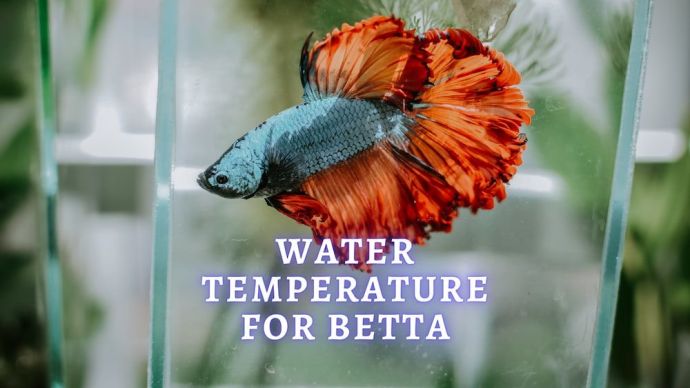 Freshwater Fish Betta Fish Temperatures: Guide To The Perfect Betta Fish Water Temperature
Freshwater Fish Betta Fish Temperatures: Guide To The Perfect Betta Fish Water Temperature - 253
- 0
 Fish Owners Tips Types of Freshwater Snails: Exotic cleaners for your Fish Tank
Fish Owners Tips Types of Freshwater Snails: Exotic cleaners for your Fish Tank - 1704
- 0









